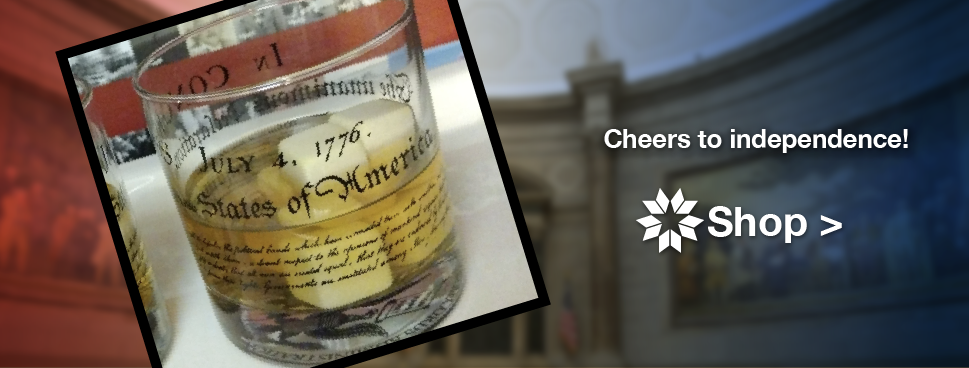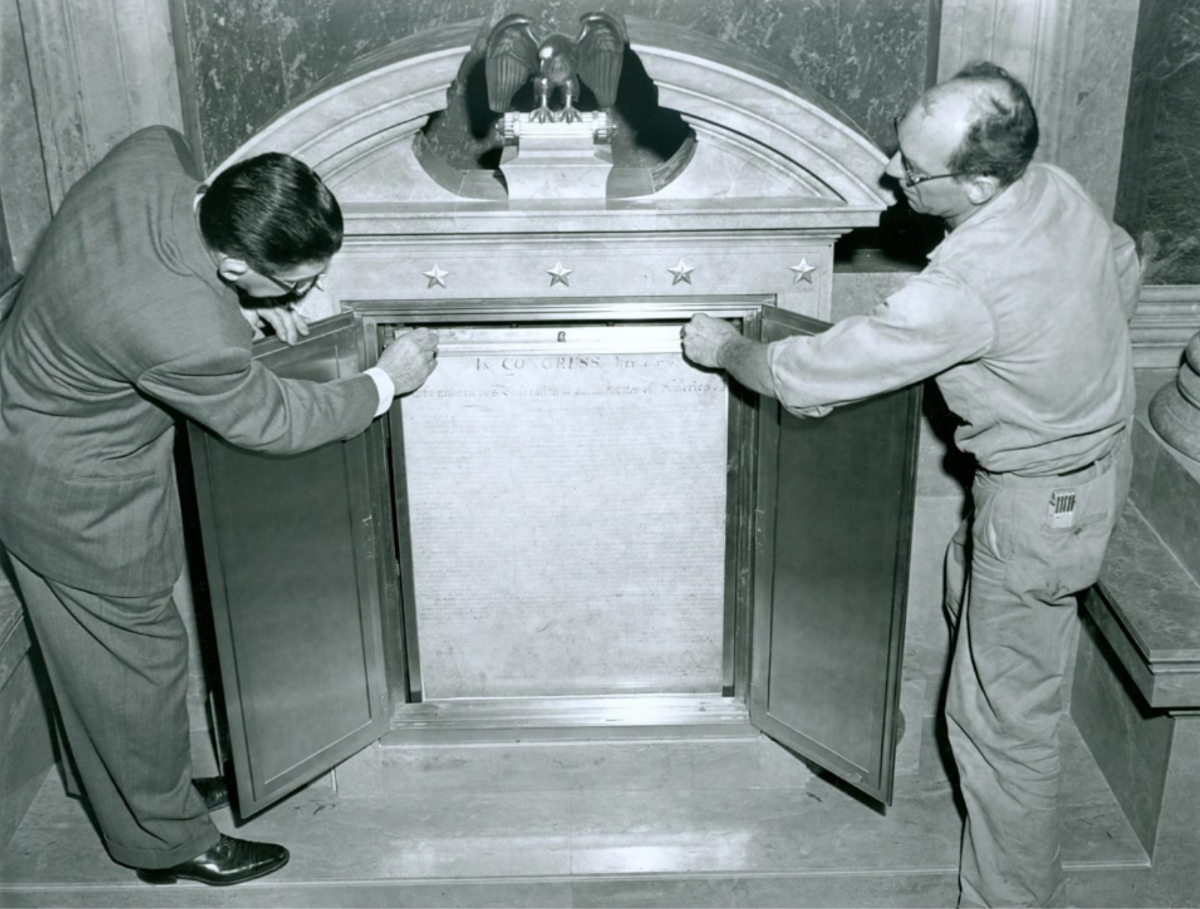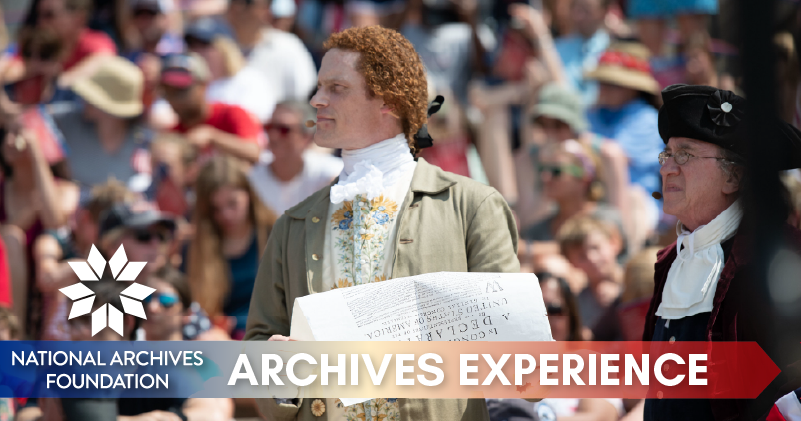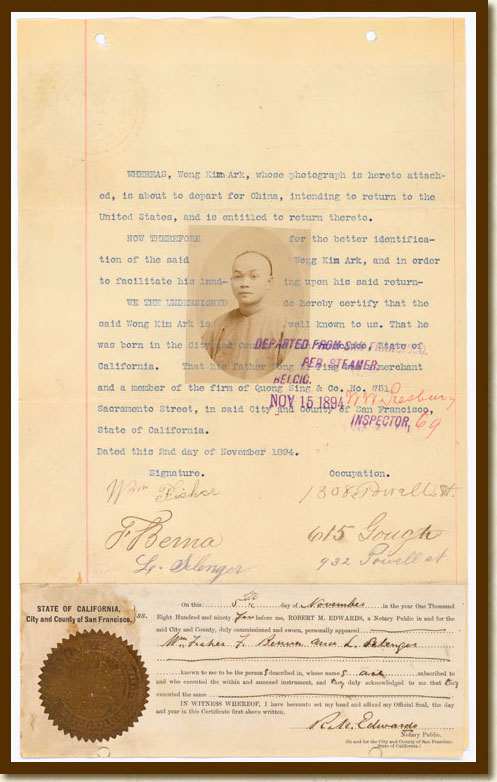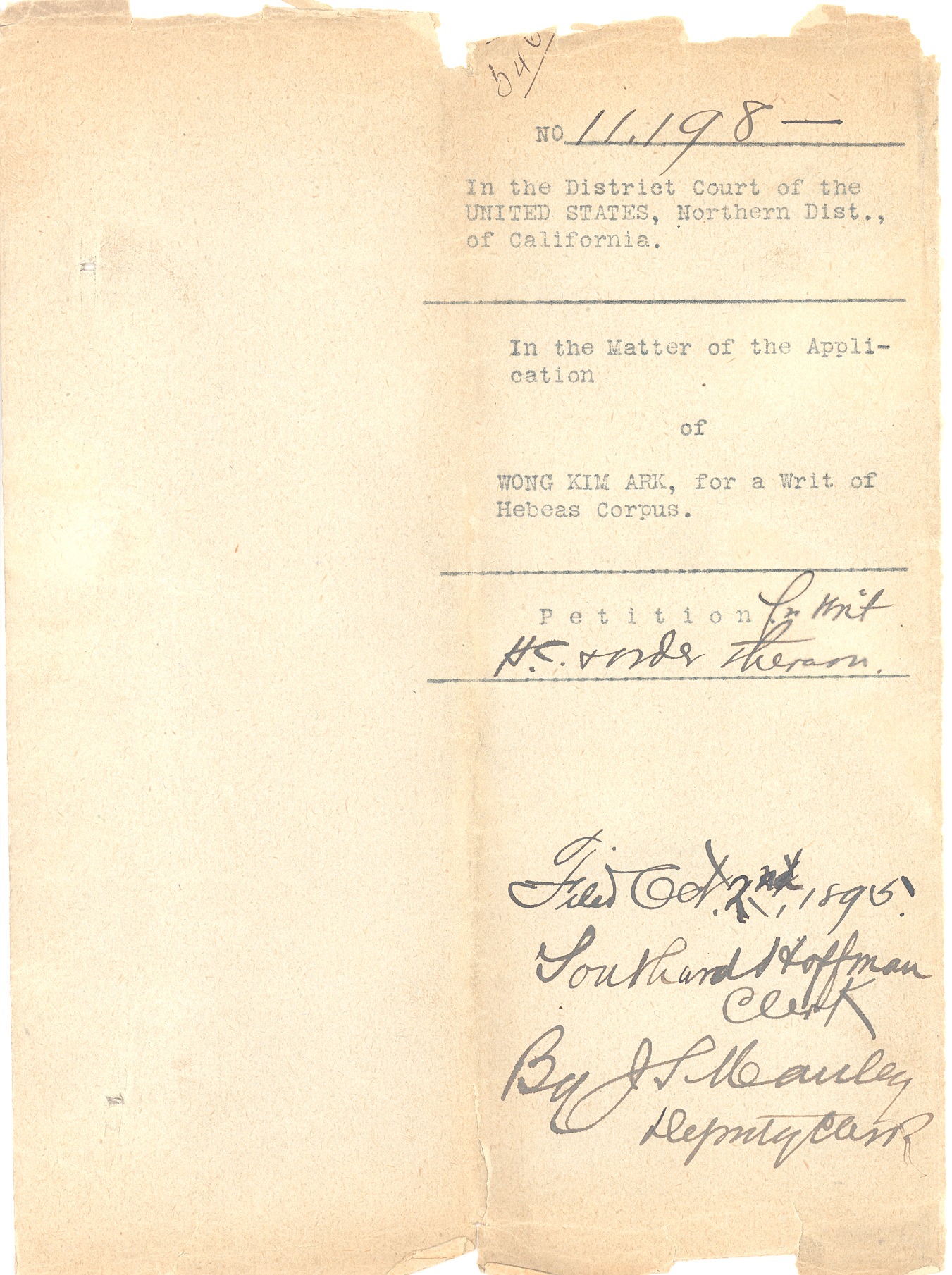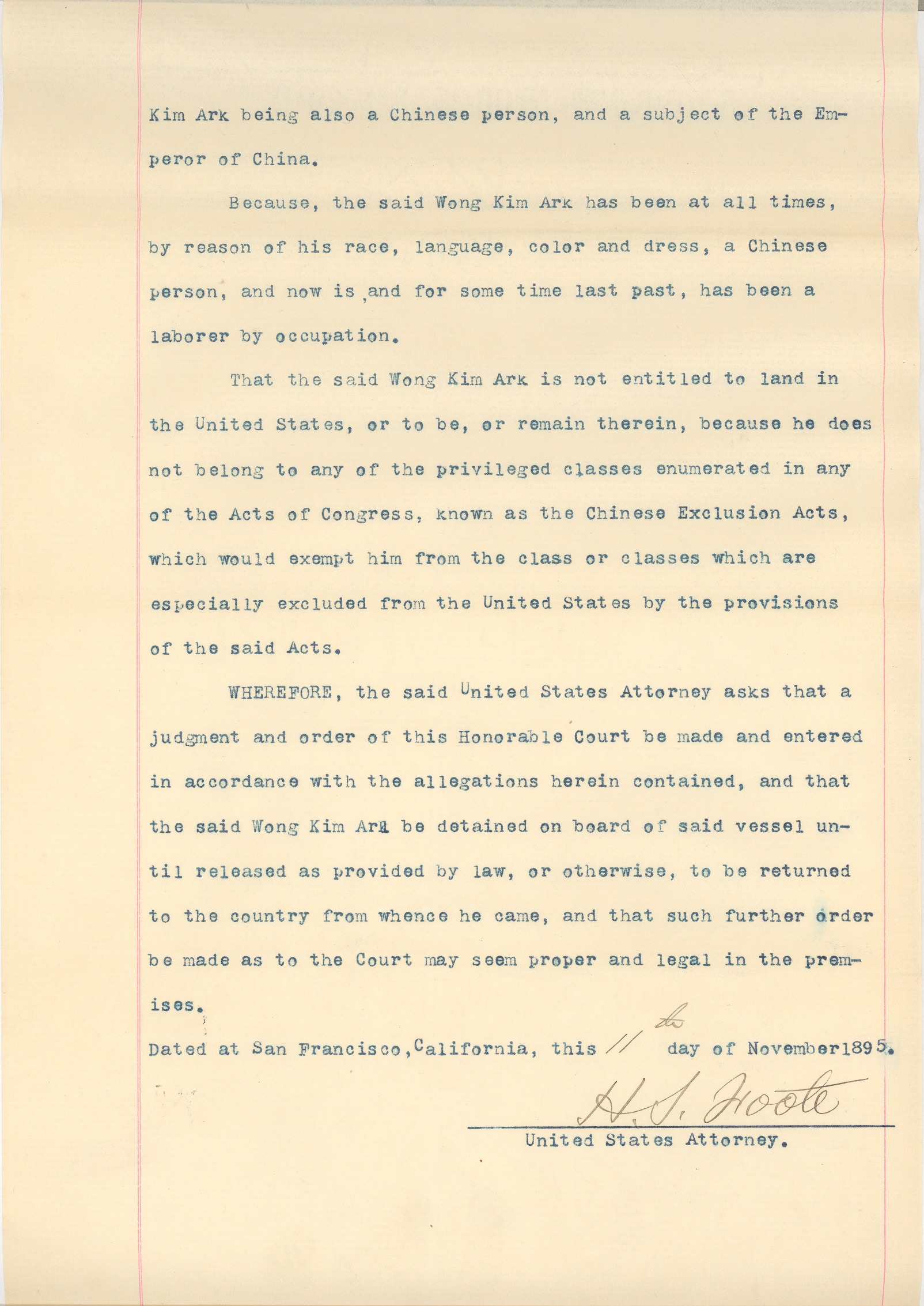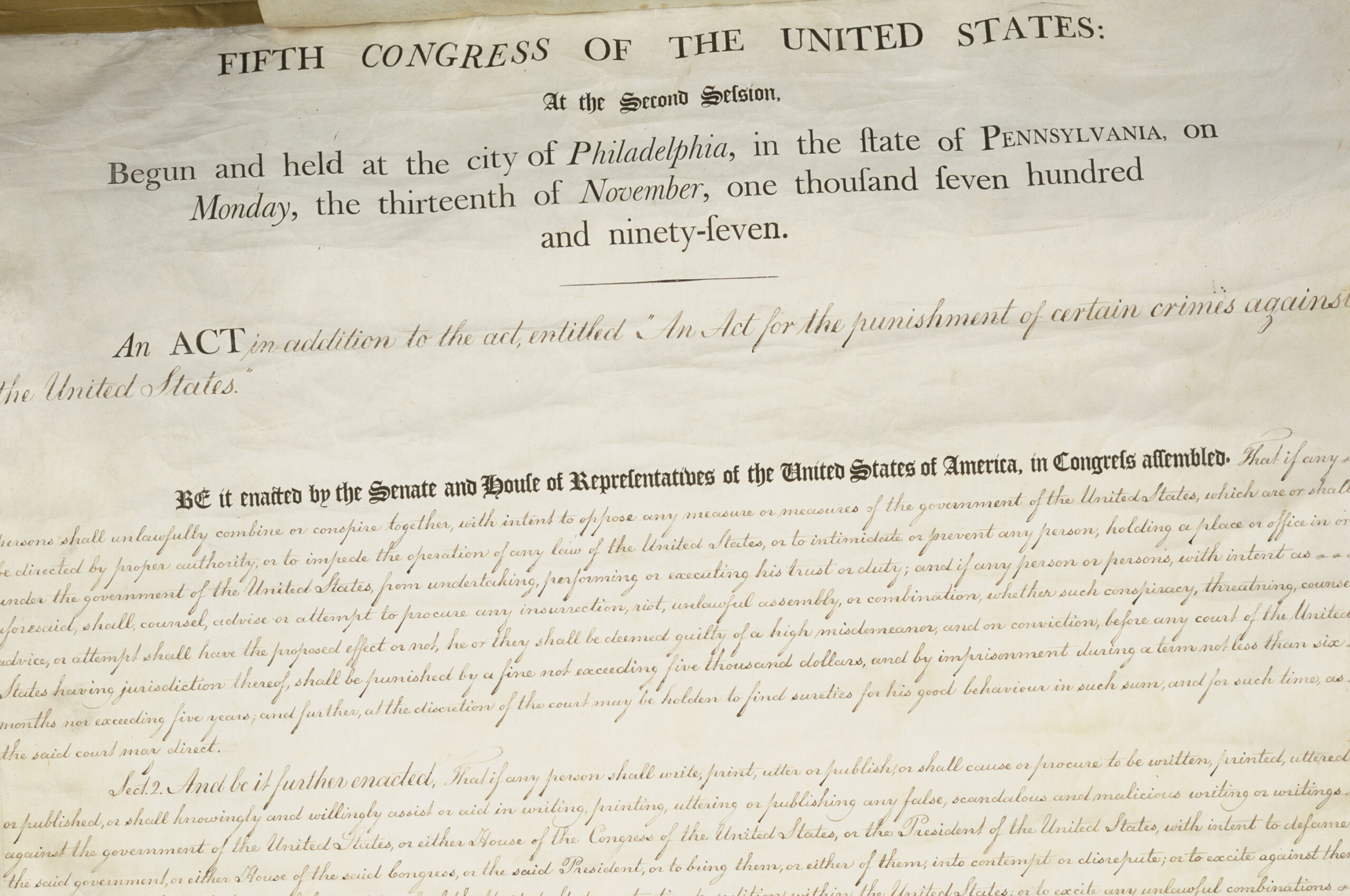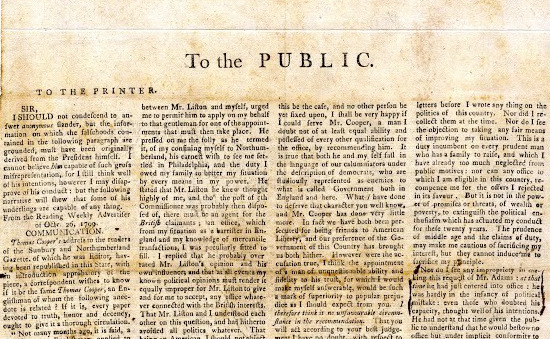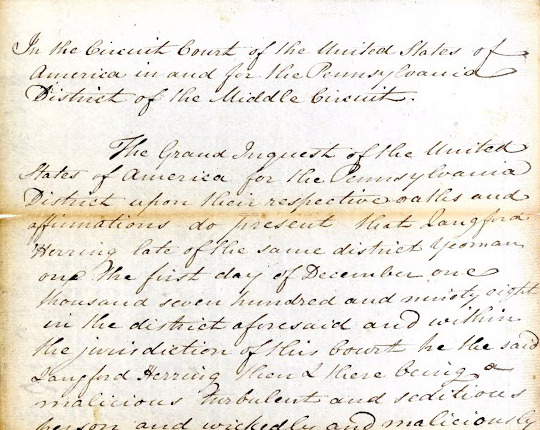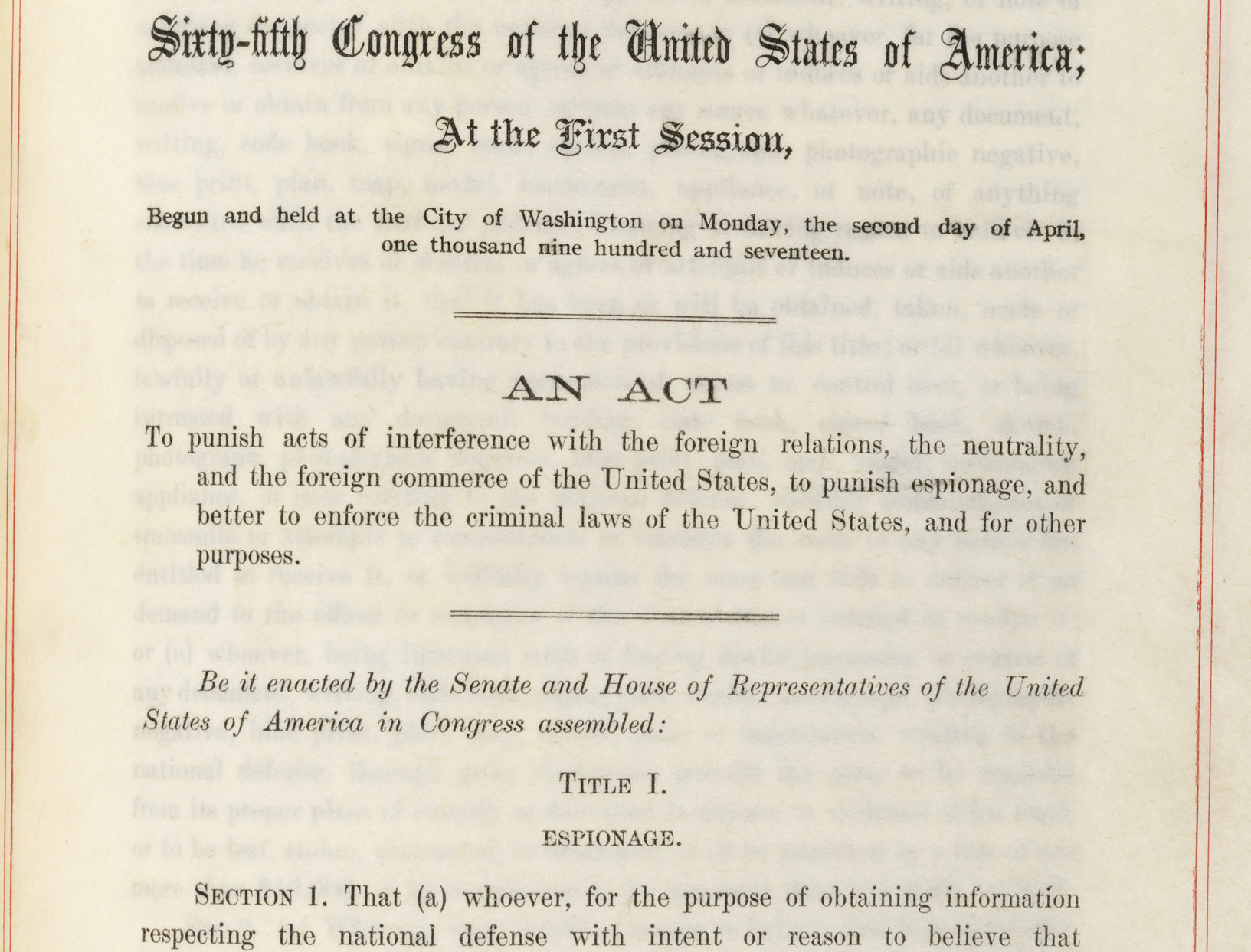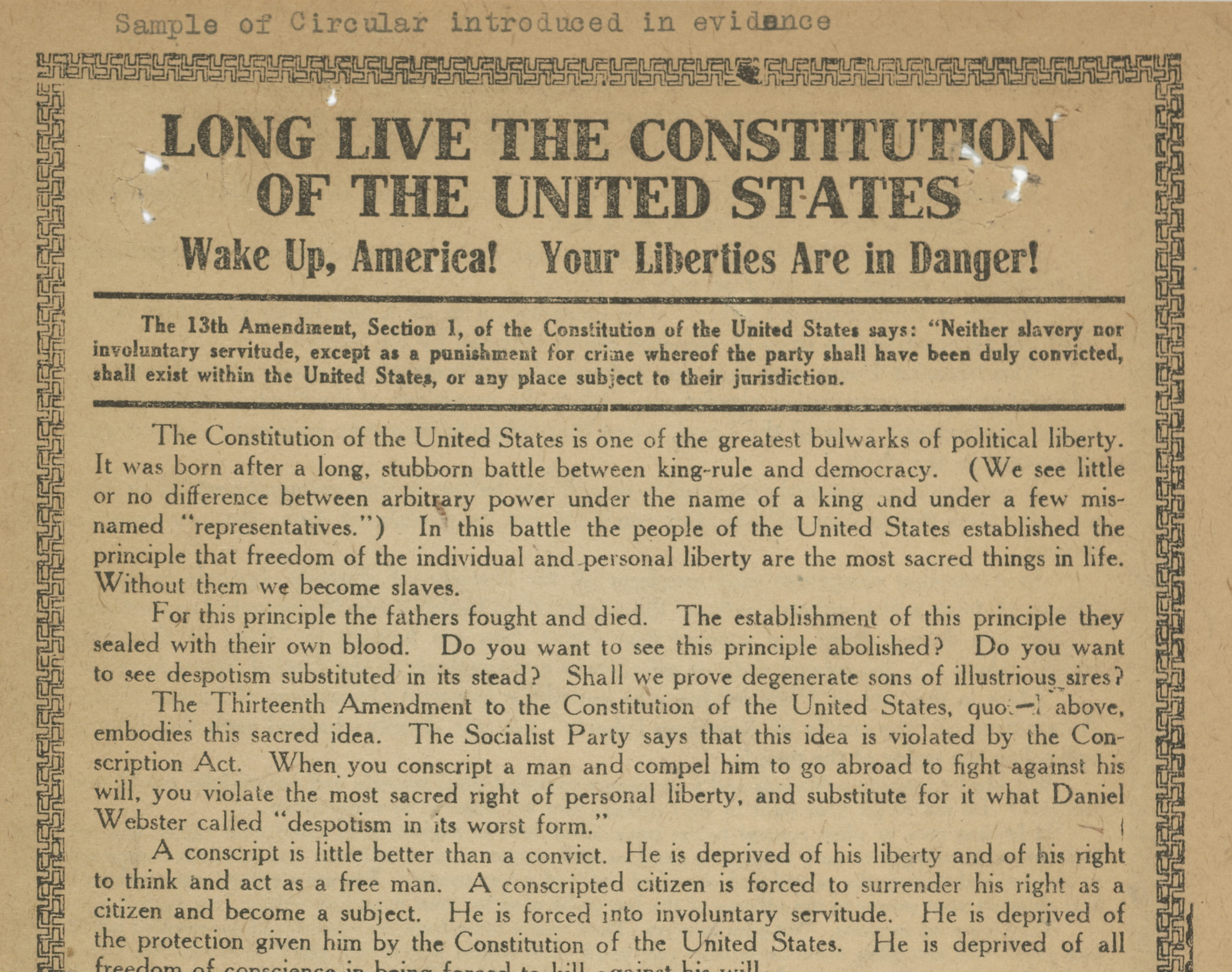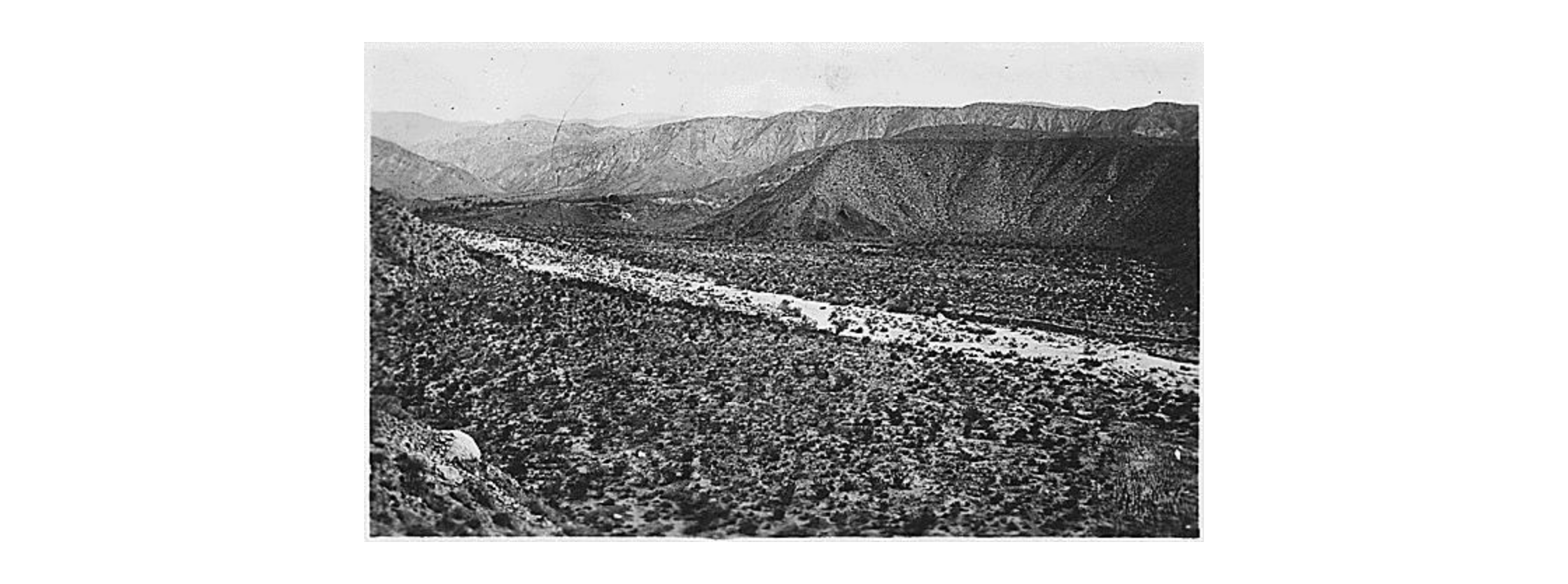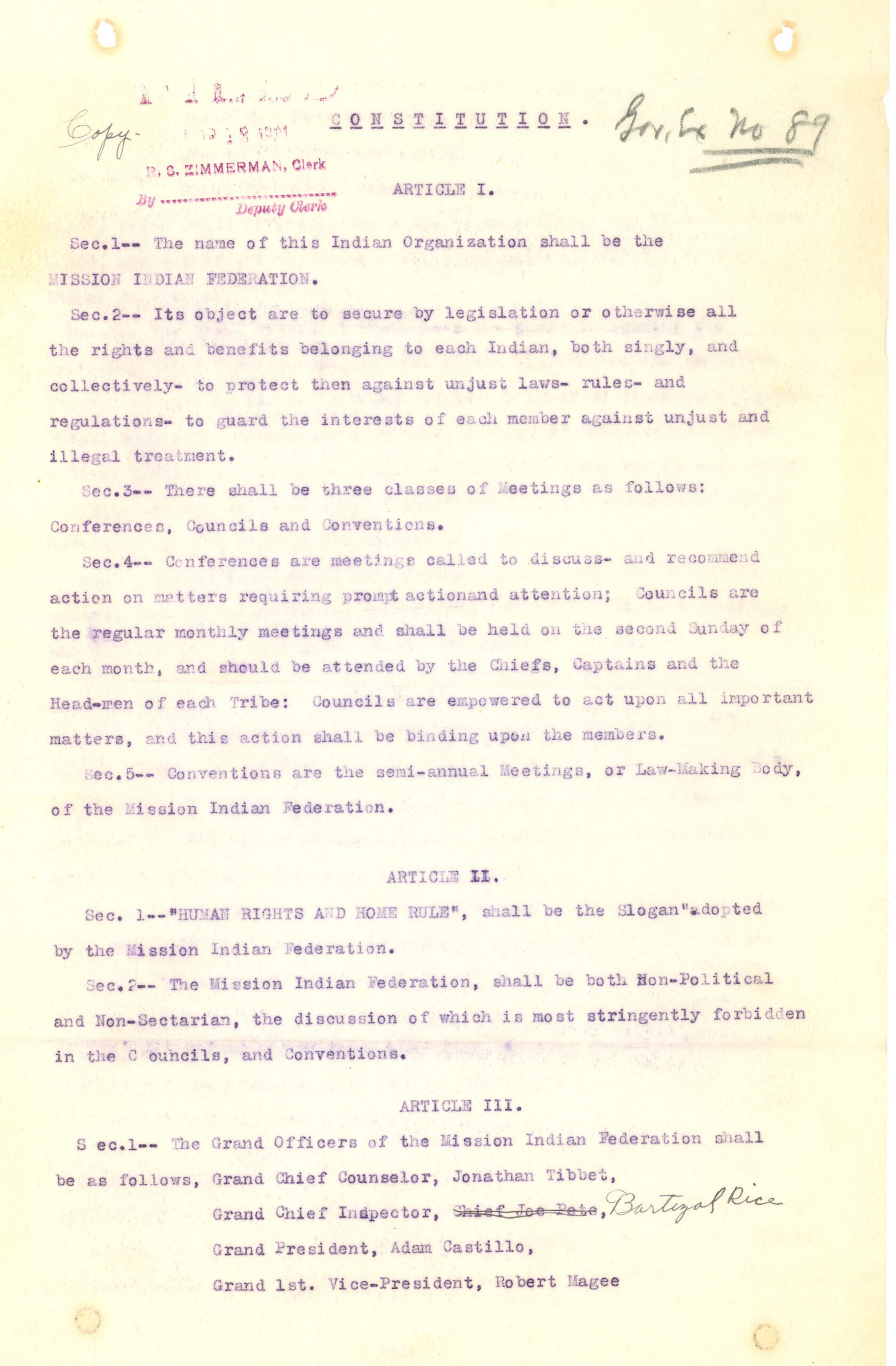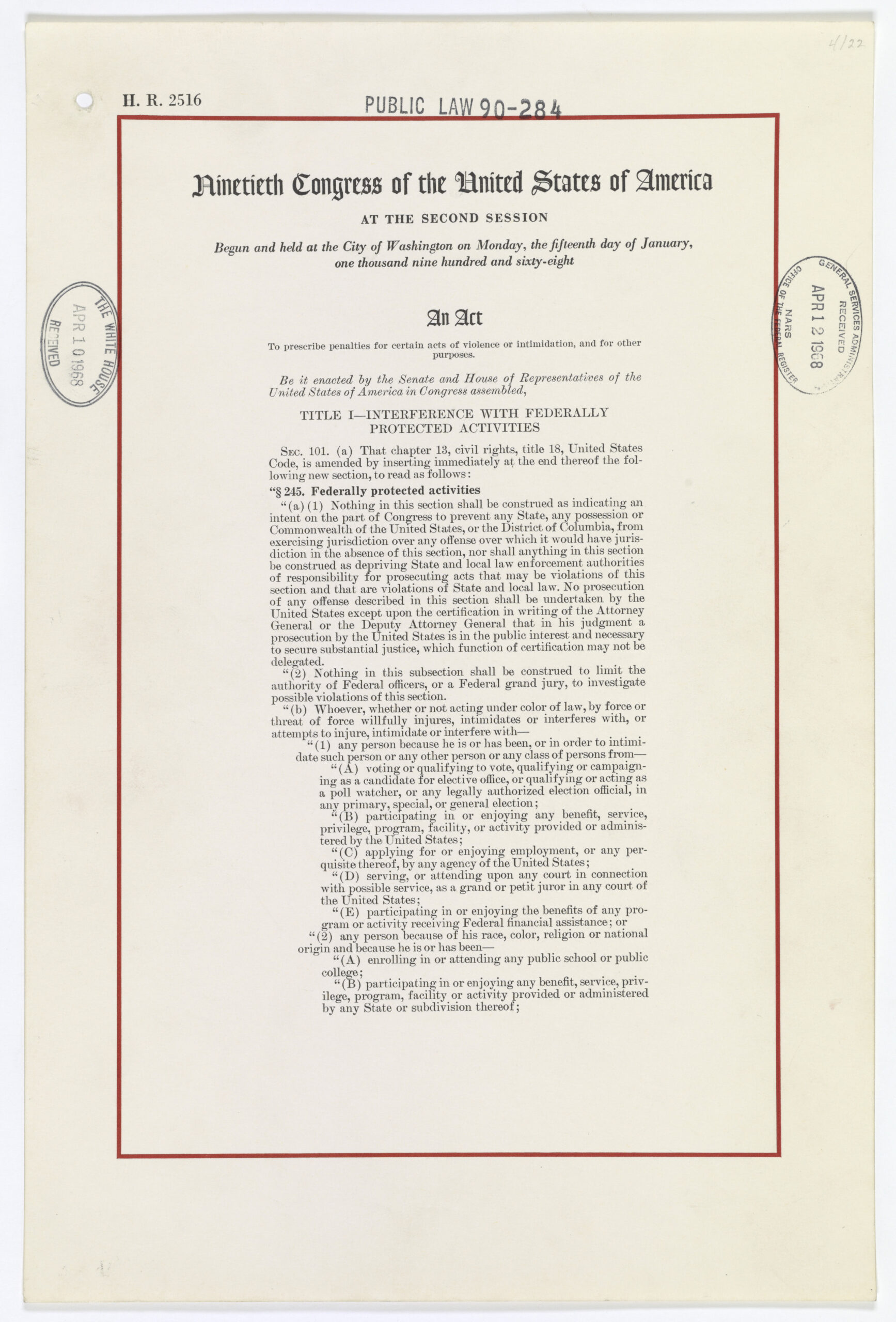Archives Experience Newsletter - June 28, 2022
Becoming What We Believe
It’s often joked that the Declaration of Independence was a breakup letter: a young, defiant nation breaks it off with their empire with a long list of grievances that describe a controlling, one-sided relationship. But read another way, the Declaration is not just a list of complaints – it’s a document that reflects the voices of civically engaged people longing for representation, a say in their government, and treatment with respect and dignity.
July 4th always marks the birth of our nation, but for the past two years, it has also marked the close of a new tradition at the National Archives Foundation: Civic Season. The past two weeks have been full of events, engagement opportunities, and social media posts encouraging young people to use museums and historical institutions as a launching ground for their participation in democracy. The National Archives Foundation, along with more than 200 other institutions, is helping young people study our past so they can use it to better our future.
Our Founding Documents are not perfect and did not include many groups of people at the time. But the Founders did have a vision that the country would grow and change and that our institutional documents would need to do that as well. They expected citizens to engage in lively debate and political activism and to participate in government.
As we close out Civic Season 2022 and prepare to celebrate July 4th, come along with us on a journey through the Archives’ Records of Rights Gallery to take a look at the Declaration’s legacy and see how various groups worked to ensure that they too have the opportunities and freedoms that the Charters originally promised.

Patrick Madden
Executive Director
National Archives Foundation
PS. Don’t forget to tune in to our July 4th at the National Archives program, live and in-person again from the steps of the National Archives Museum. Join us in D.C. or register to watch it online.
Natural-born
“He has endeavoured to prevent the population of these States; for that purpose obstructing the Laws for Naturalization of Foreigners; refusing to pass others to encourage their migrations hither, and raising the conditions of new Appropriations of Lands.”
In 1740, the British Parliament passed the Plantation Act of 1740 (“plantation” referring to the American colonies), or the Naturalization Act of 1740. Compared to present-day immigration laws here and around the world, it was fairly easy to become a naturalized citizen in the American colonies. One only needed to reside in their colony of choice for seven consecutive years, with not more than a two-month absence from that colony during that time, the only catch being you had to be a Protestant. Thereafter, you would be considered “his Majesty’s natural-born subjects of this Kingdom.” Secretaries of the colonies were empowered to administer oaths and maintained reports of new citizens to the Crown. The act aimed to encourage immigration to the colonies, and it worked: even before erecting an internationally recognized landmark in 1884 that branded us the Land of Opportunity, British North America in the mid-1700s was seen as a place of refuge and hope for those who wanted to leave the British mainland.
After the Seven Years’ War, Britain began rolling back support for the Naturalization Act. By 1773, tensions between Britain and the colonies were so high that Britain forbade naturalization completely and revoked imperial land grants in 1774. This deprived the American colonies of new citizens, jeopardized the citizenship of those who had not yet completed their seven-year residency, and stripped colonial secretaries of their power to recognize new citizens. Bringing immigrants into the colonies was so vital to their survival that they listed this as a grievance against the king in the Declaration of Independence.
Once independence was established, the citizenship of white, Protestant men was no longer called into question. In 1868, the Fourteenth Amendment solidified birthright citizenship for formerly enslaved Black Americans. But in a country where citizenship was literally black and white, some groups had to further prove and work toward citizenship. Just twenty years later, Chinese Americans faced this challenge.
In 1873, Wong Kim Ark was born to Chinese parents in San Francisco. Over the twenty consecutive years he lived in the United States, the Chinese Exclusion Act was in effect. It barred Chinese immigrants from entering the country – the only time in U.S. history that a single nationality was excluded. At some point, Wong Kim’s parents returned to China, and at age twenty-one, he left the United States to visit them. Before departing, he filed a departure statement with the state of California that included a file of his intention to return. However, when Wong Kim arrived back in San Francisco, he was detained and threatened with deportation. The U.S. Attorney for California opposed Kim’s writ of habeas corpus, citing the Chinese Exclusion Act and saying that despite being born in the U.S., Wong Kim was “at all times, by reason of his race, language, color, and dress, a Chinese person” and “a subject of the Emperor of China” and should face deportation. Place of birth and residency counted for nothing.
Wong Kim Ark took his case all the way to the Supreme Court, which affirmed a district court’s ruling that he was a citizen of the United States. This established a totally new legal concept, jus soli, the birthright citizenship of children born in the United States to non-U.S. citizens. The Chinese Exclusion Act was lifted in 1943, but until 1965, only one hundred Chinese immigrants were allowed into the United States each year.
One hundred and eight-nine years after the signing of the Declaration, the “prevention of population” and “obstructing the Laws for Naturalization of Foreigners” were lifted for the Chinese.
To view the full text of a document, click on the document when it’s the main image above
Fundamental Freedoms
“For taking away our Charters, abolishing our most valuable Laws and altering fundamentally the Forms of our Governments.”
The most rebellious colonies were put under martial rule during the height of tensions between Great Britain and its colonies. Their governments were dismantled, and they had to submit entirely to a newly appointed royal government that affected every office from judge to sheriff. Fundamental to colonial governments and their rebellious spark were the rights to freely communicate, assemble, and print news – all activities that were in jeopardy under royal control.
After years of martial law and control by a monarch across an ocean, the Declaration of Independence established the ethos of self governance and freedom from tyranny. The Bill of Rights later solidified that foundation with its guarantees from government interference in the press and organizing, but protecting the rights of political dissidents and government critics is not always popular, easy, or in the government’s best interest. It wasn’t long before the safety of individual freedoms was called into question.
Just seven years after the ink dried on the First Amendment, President John Adams’ administration faced a growing conflict with France and an unsupportive public at home. To quell discontent, Congress passed the Alien and Sedition Acts of 1798, which severely limited free press and free speech. The act criminalized “print[ing], utter[ing], or publish[ing]…any false, scandalous, or malicious writing” about the government.
Local writers like Thomas Cooper were arrested for speaking critically of President Adams and his policies. Herring’s indictment accused him of simply uttering the phrase “damn the President.” Charges of sedition just brought more ire from the American public, and Thomas Jefferson, the leader of the opposition party, said the legislation would once again throw the country into a state of “revolution and blood.”
The Sedition Acts weren’t the first or last laws limiting political dissidents, especially during wartime or under the shadow of conflict. The year 1917 was one instance – the U.S. was entering World War I while simultaneously, the Communist Revolution was raging in Russia. As a response to this growing global tension, Congress passed the Espionage Act, which was strengthened just one year later by the aptly named (you guessed it) Sedition Act. Criticizing the military draft or objections to war on religious grounds were seen as harmful to the United States government and were punishable by twenty years in prison and up to $10,000 in fines. Over 2,000 people were prosecuted under these laws.
One of them was Charles Schenck, who published a circular encouraging men to resist the draft. His case went all the way to the Supreme Court, which upheld his conviction using the “clear and present danger” standard. This case has never been overturned, and we are still trying to strike the balance between security and free speech to this day.
To view the full text of a document, click on the document when it’s the main image above
Human Rights and Home Rule
“He has dissolved Representative Houses repeatedly, for opposing with manly firmness his invasions on the rights of the people.”
Protesting by throwing tea into Boston Harbor came with consequences. The British Crown issued a swift and severe response in 1774, part of what the colonists eventually termed “The Intolerable Acts.” To be fair, this one was pretty intolerable. “The Massachusetts Government Act” revoked the colony’s 1691 charter, dissolved their legislature, placed them under military rule, and allowed the newly installed royal governor to appoint hand-selected representatives to the newly formed “legislature.” If colonists in Massachusetts Bay were upset about having no representation in the British Parliament before, this act in 1774 was a breaking point.
Despite this punishment, men of the Massachusetts Bay Colony still exercised their ability to rule themselves. They elected delegates to the Continental Congress that declared independence, brought back their state legislature after the war, and in 1787, sent delegates a second time to have a direct say in our country’s new government. Citizens of each of the other former colonies, now states, were able to exercise the same types of self-determination. But the ambitions of our emerging nation soon came into direct conflict with the centuries-old sovereign nations of the indigenous peoples with whom they shared land.
Explore by tribe, topic, or state
Tribal sovereignty has always been in jeopardy, complicated by the fact that not all Indigenous peoples agreed on how to have a relationship with the United States government. In the early twentieth century, the modern-day sovereignty and self-determination movement emerged in Southern California. The Mission Indian Federation rejected the authority of the Bureau of Indian Affairs, which was established in 1824 to encourage Native assimilation into white American culture, and much like the aggrieved colonists writing the Declaration, they demanded home rule over their sovereign nations. In 1919, the federation drafted a constitution that stated their objectives: to achieve equal rights, justice, and self-determination for tribes in Southern California.
“A Grave Injustice”
Conversely, other Indigenous peoples wanted to remain part of their tribal nations while also ensuring that they had the same protections from the U.S. government as other citizens. In 1968, the Indian Civil Rights Act was passed by Congress and signed into law by President Johnson. It guaranteed tribal members the same civil rights and liberties as all other American citizens, but it also applied those standards to sovereign tribal governments. The legislation was controversial among tribal nations because it put the individual above the tribal nation.
To this day, the questions of tribal sovereignty and self-determination have yet to be fully settled.
To view the full text of a document, click on the document when it’s the main image above

Who are your peers?
“For depriving us in many cases, of the benefits of Trial by Jury.”

View the Civil Rights Act of 1957
National Archives Identifier: 12171136
Living under a monarchy meant that the king was often the judge, jury, and sometimes executioner of those who were accused of crimes. In the colonies, it was even worse. Not only were laws made by unelected representatives or imposed upon them through military rule, but the colonists could not even defend themselves to a jury of their peers. Sometimes they were relocated for their trials, either to different colonies, or across the ocean to Great Britain for more serious crimes. This was a major grievance in the Declaration, and the right to a trial by jury was enshrined in the seventh amendment of the Bill of Rights.
But who makes up a jury of your peers? At first, juries were made up of white men who passed verdicts on all other groups of people. Women were formerly exempt from juries under the guise of “protection”; men thought that because criminal trials were graphic and upsetting, women should not have to sit on juries and be subjected to those details. But what if it was a woman who committed the crime? In reevaluating the fairness of our justice system over hundreds of years, all male juries were found to be unfair.
The Civil Rights Act of 1957 finally affirmed that a jury of one’s peers needed to include both sexes. It took 181 years, but women’s representation was finally extended to a jury of their peers.
Do Not Disturb
“For Quartering large bodies of armed troops among us.”
Ben Franklin’s memo
showing the extent of soldier housing
Where do you house the largest army in the world? For Great Britain, the answer was in the homes and businesses of its North American colonies. Not only did locals have to host soldiers, often with no compensation from the crown, but there was also the added benefit of maintaining a large military presence among the rebellious colonists. This grievance was specifically listed in the Declaration – more than once!
The Third Amendment
Colonists were so scarred by the unending presence of military personnel that their experiences laid the basis for the Third and Fourth Amendments to the Constitution. The Third Amendment prohibited the government from housing soldiers in civilians’ homes. We don’t hear much about the Third Amendment today, but it’s important to note that it’s the only one that talks about the relationship between civilians and the military in both war and peacetime. It’s also a pillar of one of the country’s most important founding values: civilian control over the military.
